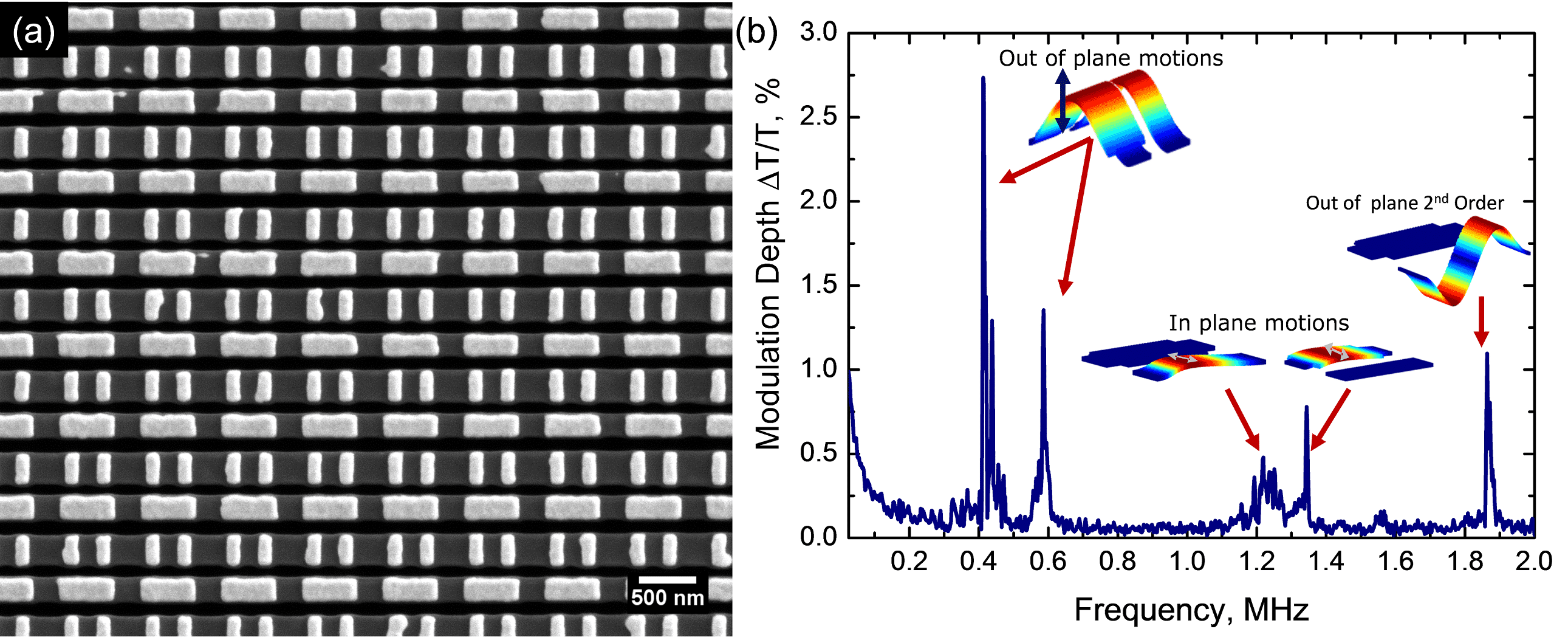
Light Driven Nonlinear Plasmonic Optomechanical Metamaterials
The realization of integrated optical system on a chip requires extreme miniaturization functional elements. To reach this objective, novel approach must be developed to manipulate light with light in small areas and interaction lengths. Here we experimentally demonstrate optically driven mechanically reconfigurable photonic metamaterial exhibiting an extraordinarily large optical nonlinarity(β~0.8 cm/W) which is 7 orders of magnitude larger than nonlinearity of a conventional nonlinear material, GaAs at optical frequencies.
Fig. 1(a) shows a nonlinear reconfigurable array of Π-shaped plasmonic resonators sitting on double clamped silicon nitride bridges fabricated by focused ion beam milling from a 50 nm thick gold layer covering a 50 nm thick silicon nitride membrane. In order to manipulate the metamaterial`s optical properties by light, a modulated laser beam was pumped at 1550 nm, where simulations predict significant relative optical forces on the bridges. The modulation of the metamaterial`s transmission was probed at 1310 nm and detected using a photoreciver and a lock-in amplifier. At modulation frequencies of 10s of kHz, the optical pump leads to pronounced modulation of the structure’s transmission characteristics at the probe wavelength, see Fig. 1(b). For a pump power of 2 mW (peak intensity I =206 W/cm2) a modulation amplitude on the order of 1% is detected at 25 kHz modulation. As the modulation frequency increases, the out-of-plane and in-plane mechanical resonances are observed optically. While optically induced differential thermal expansion contributes to the mechanical nonlinearity at low frequencies, the in-plane mechanical modes (1.2 MHz and 1.4 MHz) cannot be directly excited by thermal effects but can be explained by near field optical forces.

In summary, optically actuated plasmonic optomechanical metamaterials offer an opportunity to achieve precise control of metamaterial properties through optically induced mechanical deformation of nanoscale metamaterial structures by electromagnetic near-field interaction and thermo-optical effects. With light intensity of few μW/μm2, metamaterial arrays can be sufficiently actuated leading to light-by-light modulation with MHz bandwidth.
niz@orc.soton.ac.uk
Powered by Eventact EMS